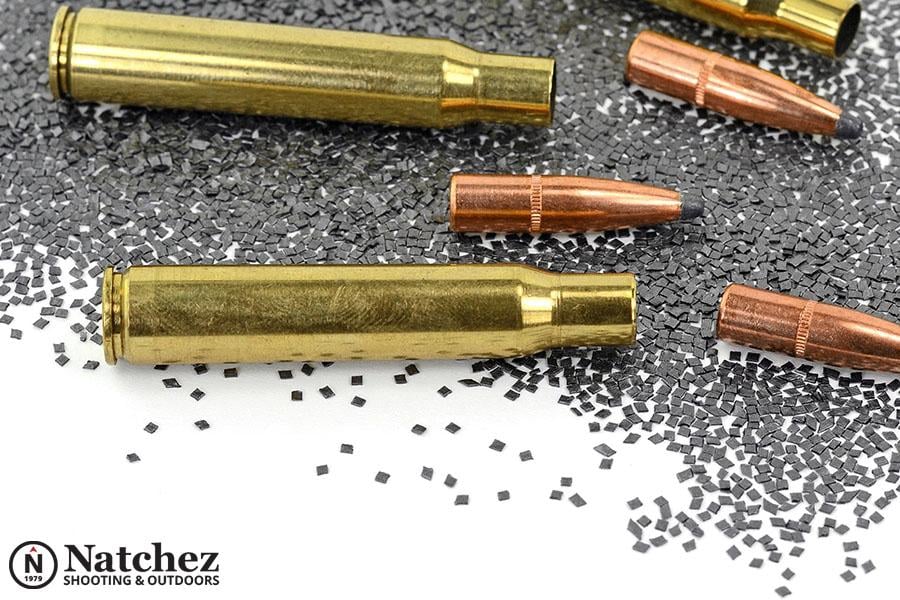The 8-Minute Rule for Ammunition Pro Llc
The 8-Minute Rule for Ammunition Pro Llc
Blog Article
Ammunition Pro Llc - The Facts
Table of ContentsTop Guidelines Of Ammunition Pro LlcThe Definitive Guide to Ammunition Pro LlcThe smart Trick of Ammunition Pro Llc That Nobody is Discussing9 Easy Facts About Ammunition Pro Llc ExplainedFascination About Ammunition Pro Llc
Many modern cartridges are composed of 4 main components the instance, primer, propellant, and projectile. A shotgun cartridge, more generally referred to as a shell, contains five parts the situation, primer, propellant, projectile(s) and wad. Allow's take a look at each component of a round, just how it functions, and options that might be offered: The casing is the container, or real estate, into which all the various other components fit.Technically, the increased use of steels apart from brass have actually made this jargon inaccurate, nevertheless, it remains a commonly used and approved term. If you will be reloading you should stick with brass, brass alloy or layered brass. Pure very first run brass is best; nonetheless, recycled brass can be utilized too.
Other forms of brass, including alloys or layered versions, can be utilized yet will certainly have a much shorter lifetime. Early weapons counted on gunpowder, which is a details mix of chemicals that sheds rapidly and rapidly creates expanding gases as it melts. Creating the capacity to constrain and regulate the burning process and gas expansion was the vital to creating trusted, and secure, guns.
Due to its instability gunpowder has actually been changed by modern chemical substances that accomplish the very same result without the threat. The propellant requires a smaller cost to be safely sparking and this is accomplished by the guide.
A Biased View of Ammunition Pro Llc
As is the situation with the propellant, gunpowder has actually been changed by even more steady modern-day chemical substances in the building and construction of the guide. Quality guides are vital to correct, reliable ammunition performance. A harmed or damp guide will certainly frequently lead to failing to fire or a postponed, hang, fire scenario.
the bulletEvery gun needs a things that will certainly be eliminated from the weapon which will, in turn, be made use of to strike the desired target. This things is called the projectile, although the terms bullet, slug or shot are frequently used in its place. In truth rifles & handguns fire bullets while shotguns fire slugs or shot, the latter being used to explain a team of pellets gotten rid of from a solitary covering or housing.
Some manufacturers have even explore adding a polymer cone to hollow factor designs. The result is controlled development and much deeper infiltration. Bullets, which is an acceptable term for the projectile for the majority of contemporary guns, can be found in a variety of kinds. Each is made for a various function and might or may not cycle effectively in every gun.

How Ammunition Pro Llc can Save You Time, Stress, and Money.
As gone over previously, the instance is the housing into which the various other components are housed. When it comes to centerfire cartridges (one of the most usual sort of modern-day ammo) the primer is fitted into a pocket in the base of the instance, the propellant is packed right into the hollow interior room and a projectile (also known as bullet) is secured into the open end.
The shooting pin, subsequently, moved quickly onward and strikes the guide. When struck by the firing pin the primer sparks and nearly instantly ignites the propellant by enabling a flame to go into the cartridge using a tiny opening behind the primer cap. This causes a rapid chemical reaction that develops expanding gases which, because of the constrained area within the case, cause the projectile to be rapidly expelled.
Naturally, every weapon proprietor has an obligation to read the owner's handbook and technique safe capturing. Prior to you understand it, you will be the another concern for details, waiting patiently while you shoot so they can ask "Is it a bullet, ammunition, or cartridge?".
The Main Principles Of Ammunition Pro Llc
All are instances of self-contained ammunition, which has actually been with us for well over a century. Using these four components, ammunition is either made by manufacturing facilities or handloaders, and though the make-up and layout of the fundamental parts have developed and proceed to do so, their total function and just how they interact have not.
Cartridge cases are generally made of brass. They will hold the primer, gunpowder, and projectile. (Photo/Richard Mann)The cartridge situation is what holds all self-supporting ammo with each other. With rifle and hand gun ammo, the situation is sometimes referred to as "brass." With shotguns, the case is frequently called a shell or a hull.
The Ultimate Guide To Ammunition Pro Llc
Brass instances are reloadable, while steel cases are not. With shotgun hulls or coverings, the base is made of brass for stamina, et cetera of the situation is made of plastic for economic climate. Shot coverings are also reloadable. True Speed is currently making rifle cases out plastics and metal, comparable to shot coverings.
With a lot of shotgun coverings, additional information regarding the lots is published on the plastic part of the hull. Firearm Ammunition. Centerfire guides match the cartridge or covering head, and when impacted by the firing pin they produce a stimulate to begin the gunpowder melt. (Photo/Richard Mann)There are 2 kinds of priming methods used in modern, self-contained ammunition
Report this page